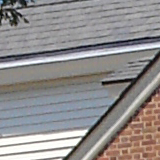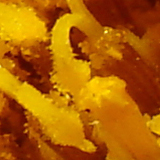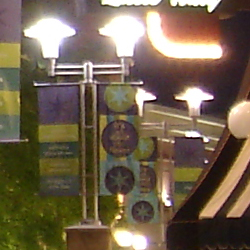Sony DSC-M1: Good Video, Disappointing Pictures
by Stephen Caston on June 20, 2005 12:05 AM EST- Posted in
- Digital Camera
General Image Quality
For these pictures, the camera was reset to its factory default setting. Then, it was set to its highest quality recording setting. The pictures were then taken in Auto mode unless stated otherwise. Portrait-style images have been rotated using Irfanview's "lossless operations". Click on a thumbnail to view the full-size image. All images are in sRGB color space.  Click to enlarge. |
 Click to enlarge. |
 Click to enlarge. |
 |
 |
 |
 Click to enlarge. |
 Click to enlarge. |
 Click to enlarge. |
 |
 |
 |
Overall, the image quality of the DSC-M1 is fairly average. In the first two samples above, the M1 demonstrates that it is capable of capturing a decent amount of detail. However, the details are characterized by a fuzzy and muddy appearance. In both pictures, even though the subjects are in focus, the details appear very soft. In the third and fourth samples, the M1 reveals another common problem - JPEG artifacts. We were pretty surprised to see this considering the relatively large file sizes. Although we spotted JPEG artifacts more frequently in shadow areas, they are also visible along fine details in nearly every picture that we took. In the fifth sample, the M1 proves capable of taking very detailed macro shots through the use of the Magnifying Glass mode. In the final sample, we used the ordinary Macro mode. Although the flowers are in focus and aesthetically pleasing, it is also very obvious that the camera has oversaturated the red channel causing clipping. We recommend shooting in Program mode where the saturation can be adjusted. Again, we weren't incredibly impressed with the image quality of the DSC-M1. However, we were happy to see that there were no real problems with purple fringing or jaggies. Most people will find the image quality of this camera acceptable for prints up to 8x10", but anything larger and you will probably notice the soft details and JPEG artifacts.
Twilight mode
 (ISO 100, 1 sec., f/3.5) Click to enlarge. |
 |
In Twilight mode, the M1 is limited to maximum exposures of 2 seconds. In our 1-second exposure above, the M1 proves that it can capture a significant amount of detail. However, just as we found with our daylight images, the details are soft/fuzzy. Again, we are surprised to see so much noise at ISO 100.
Movie Mode
 (640x480, 30 fps) Click to view. |
We recommend using VLC to play this file if you are having difficulties viewing it.
As you can see by our sample clip, the image quality is pretty good. However, the real advantage that the M1 has over traditional MPEG-1 videos is the size of the resulting file. The M1 sample video file is only 4.98 MB (14 seconds) compared to the 18.5 MB (10 seconds) file size that we saw on the Canon SD300. With our 512 MB Pro Duo card installed, the M1 indicates that we have 21 minutes and 41 seconds of video available at 640x480 and 30 fps. In addition to the option to use the optical zoom while recording, you can also select the white balance, exposure compensation, and image effects (B&W and Sepia) for video clips.










21 Comments
View All Comments
Nancymbsmo - Tuesday, January 17, 2012 - link
So far, Sony Cybershot has ruled in the camera market, but now as per the advent of new technologies and rising challenges, many people have shifted from Cybershot to other coolest digital cameras. But <a href="http://www.techiecop.com/cameras/sony-cameras/sony... Cybershot </a> DSC-M1 got Unique style and beautiful design along with powerful performance.